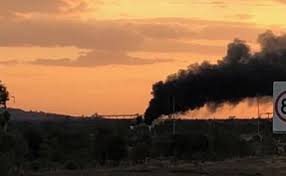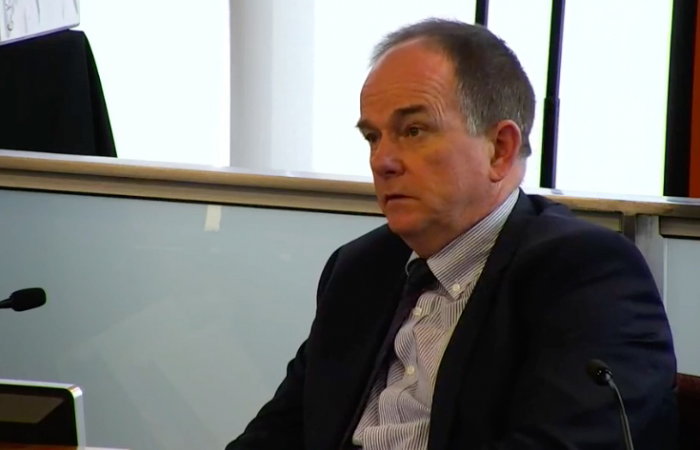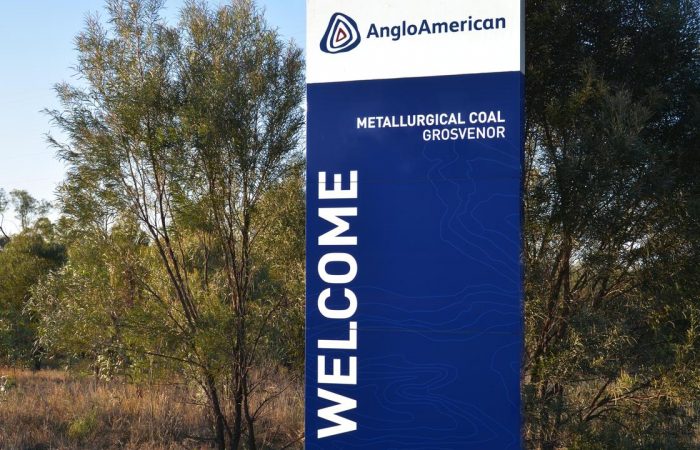
North Goonyella Detected Ethylene in August 2018. More than a month before mine is lost to heating and methane explosion. Same sort of time frame as at Grosvenor in 2020.
2021-03-19 – 0038 PEABODY ENERGY – AMENDED COMPLAINT (3023799.1) (1)
We have heard at the Grosvenor Mine Inquiry that Ethylene was first detected on the 19th March 2020 and then in April in LW104.
As we know the methane explosion on the Longwall face happened on the 6th May
I have searched through the US class action complaint against Peabody Energy for the word Ethylene.
I have collated all of the Sections where the word Ethylene appears.
Ethylene was detected in August at 1ppm, and the Mine is lost to out of control heating and a resulting methane explosion by 26th September.
So we are looking at around a month to 7 weeks in both Mines.
They mine the same Goonyella Middle Seam at equivalent depth underground.
That surely cannot just be a co-incidence.
I will never understand why the Confirmed presence of Ethylene does not set alarm bells off in Management brains.
Cant they understand
ETHYLENE is VERY VERY BAD
MINE and WORKERS ARE IN GRAVE IMMINENT DANGER.
DO WE HAVE THE TIME TO EMERGENCY SEAL THE LONGWALL PANEL UNDERGROUND IN A CO-ORDINATED TIMELY USING PREP SEALS WITH ALL WORKERS EXCEPT THOSE ON EMERGENCY SEALING REMOVED FROM THE MINE?
OR IS THE HEATING SO ADVANCED WE MUST WITHDRAW ALL WORKERS AND SEAL FROM THE SURFACE?
72. In January 2014, elevated methane levels and the presence of ethylene (dangerous even in minute levels) were detected at the mine. As a result, an emergency seal was constructed in Longwall Tailgate 7 at North Goonyella.
- Elevated Methane and Ethylene Levels Detected at North Goonyella in Late August 2018 Leads to Mine Evacuation
102. CW-6 explained that in August 2018, there had been readings of ethylene, which at minute levels serves as a warning as it is not common in mines. According to CW-6, he heard that in August 2018, there was an Ethylene reading of 1 ppm (an Ethylene reading of 5 ppm triggers an immediate mine evacuation). CW-6 added that the danger with Ethylene is that it is not easy to ascertain how much time from its emergence there is before an event occurs.
103.CW-5 confirmed that if there was a reading of Ethylene in North Goonyella, this was a “red flag” because Ethylene is “a fair way down the combustion curve.” CW-5 explained that the presence of Ethylene should warrant an investigation immediately as it may be the leading indicator that there is a fire.
131. CW-7 explained that gas levels in the mine fluctuated based on the time of the day. For example, around 4:00 PM local time, gas levels typically would go up as the barometer went down, but that would reverse in the morning. CW-7 recalled that about 10 days into the period of elevated gas levels, CITEC still detected the ethylene, which was uncommon in mines. CW-7 explained that this gas was more common at plants where timber was burning and signified to miners that there is trouble and certainly an “event” is occurring. According to CW7, the presence of ethylene was brought up by employees at the morning briefings and discussed at meetings of the critical incident team.
132. CW-7 recalled, in response to this concern, Romanski took a group of three or four people into the mine to adjust the position of the monitors. CW-7 explained that Romanski thought the readings were inaccurate and a result of incorrect positioning of the equipment. According to CW-7, one of the men that entered the mine was an electrician, who upon exiting told CW-7, “I am not [expletive] going back in there” and made it clear to CW-7 that he would refuse to re-enter the mine if asked. CW-7 described the electrician as looking “quite disturbed” and pointed out that this was very uncommon for people accustomed to being in mines. CW-7 advised that every member of the party carried handheld monitors and that afterwards that same electrician informed CW-7 that the environment in the mine was conducive to an explosion. CW-7 recalled that after the adjustment to the monitoring equipment, the ethylene was still recorded as present.
179. The North Goonyella Union Lodge disbanded in November 2019, after 26 years, following Peabody’s October 2019 announcement that the Goonyella mine would not reopen for several years ahead would prevent critical mining equipment being sealed in the mine and long-term interruption to coal production. Ludlow’s email stated, in part:
Dear All,
I would like to provide everybody with an update on the situation at North Goonyella at present. . . . On the Thursday night of the 30th of August, our workforce was withdrawn from the pit due to high/low gas and oxygen readings in our tailgate area under directions of a TARP. Our workforce returned underground the following day only to be removed that afternoon before our nightshift was able to return underground. From Saturday afternoon of the 1st of September, our workforce was withdrawn and subsequently aside from a few instances that I will detail below, has not been able to go back underground due the elevated/decreased gas and oxygen readings.
This event has seen high readings of gas that we don’t want, low gas readings of gases we do want and more oxygen than we want in our goaf. We have had a raft of experts join us on site and work with our IMT to try and figure out what is occurring underground with many different opinions however this event continues to escalate. The readings we have been receiving have been fluctuating with the barometer but unfortunately steadily increasing before sitting stagnant for the best part of 2 weeks up until Sunday just gone.
Where we are now (Since Sunday Morning):
To date, our workforce has been withdrawn from the mine completely since the 1st of September with the only access to the mine workings done so as previously mentioned however we have had a complete withdrawal of everyone continuously since approximately the 14th of September.
I have mentioned in this section “since sunday morning” because things have changed significantly from that point. For the approximately 10 days before Sunday, we had seen readings of around 600ppm CO, 12% Oxygen, stable amounts of both ethane and ethylene as well as other gases, all fluctuating with the barometer as it rose and fell. On Sunday morning we seen the likes of CO increase to 1500 ppm and hydrogen increase to 1600 ppm of which were both significant increases to these gases, with other gases doing similar things. On Monday it only got worse with readings recorded of up to 28,000 ppm of CO and 36,000 ppm of hydrogen before coming back to about 2000ppm and then going back up to just higher than those peaks again on Tuesday. Since that time we have lost the tube that we were recording those readings to either malfunction, melting or being destroyed by a roof fall as the popular theories. We had previously also lost the main sample point in the tailgate chute road on the Sunday night due to this roadway being sealed. This meaning that along with losing another of our sample points on the Tuesday night, we effectively don’t know what readings we are getting down there at present.
Our mine site has been abandoned in the sense that in case of an explosion underground, we need to have exclusion zones. We have moved our control room away from site, our IMT is based out of our CHPP now and our workforce is out in the paddock manning the flauxal units to ensure they operate continuously. Anybody else who is not required is being told to stay at the camp on standby so that we don’t have unnecessary personnel on site.
To summarize, our mine is not in a good way and the reality of sealing a 3rd longwall in our mine is right in front of us unless we have some miraculous change in circumstance in the coming days. Whilst it would be negative to seal this longwall block with half a longwall inside, it would be somewhat positive in the fact that we are not having to seal the whole mine. None the less, if we do have to seal this block then the future of North Goonyella is up in the air and we won’t know what that looks like until discussions would take place around that…
360.After the acquisition of North Goonyella by Peabody, the mine continued to experience spontaneous combustion and heating events, and frequent instances of elevated methane levels. From mine acquisition in April 2004 through the spon com event on September 1, 2018, the North Goonyella mine: (i) repeatedly recorded elevated levels of methane gas in the mine; (ii) periodically recorded the presence of ethylene (dangerous even in minute levels) in the mine; (iii) experienced frequent mandated withdrawals of mine personnel; and (iv) received countless MREs and HPIs from regulators who met often with mine personnel to discuss health and safety risks at the mine.


